When an external force is applied, A rigid body changes its size and shape due to internal mechanical stress. We represent this change in length by strain. In this article, we will discuss what is the strain in mechanics? Types of strain and how to calculate Mechanical Strain?
What is Strain in Mechanics?
Strain in mechanics measures the deformation in a material when mechanical stress is applied. Mathematically mechanical strain is equal to the ratio of change in length to the original length.
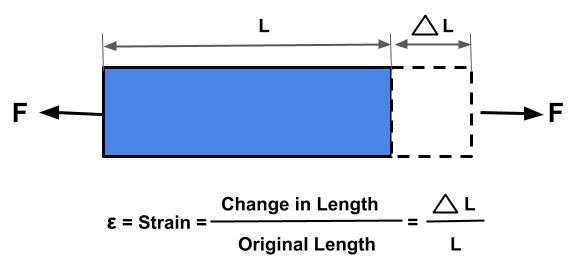
Strain is a dimensionless quantity. It is denoted by “ε”. Let’s understand strain in context to external force and stress applied.
Example of strain in Mechanical Engineering
The rubber band changes its length and cross-section area when we pull it. We can represent this change in length and cross-section area by mechanical strain.
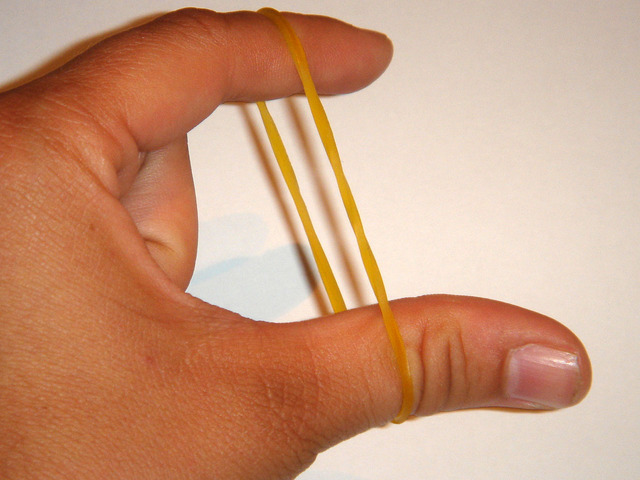
In the above example, mechanical strain in the rubber band depends on the following factors:
Stress Acting in the Material
Deflection in rubber band ∝ Applied external force
Deflection in rubber band ∝ Strain produced in material
Stress in material ∝ Applied external force
From the above three equations, strain in mechanical engineering is directly proportional to stress acting on a body.
Mechanical strain is zero without stress. It is independent of external force.
Cross-Sectional Area
The higher the cross-section area, the lower the produced stress and strain in the material.
Part Cross Section Area ∝ 1/ Stress in rubber Band
Strain in Mechanics ∝ 1 / Body Cross-section area
Resiting force exhibited by the Body
The resisting force exhibited by a body depends on its material. For example, steel exhibit higher resistance compared to rubber material.
Strain in mechanics ∝ Mechanical properties of a material.
Types of Strain in Mechanical Engineering
We can classify Mechanical Strain into the following types according to the direction of change in length.
- Normal Strain
- Lateral Strain
- Longitudinal Strain
- Shear Strain
- Volumetric Strain
1. Normal Strain
Normal Strain in mechanics is the strain inside a body when an external force perpendicular to the cross-sectional area is applied. This external force changes the part length:
- Change in the part length in the direction of applied load is represented by longitudinal strain.
- Change in the part length perpendicular to the applied load is represented by lateral strain.
The change in length in the direction perpendicular to applied force occurs due to Poisson Effect. We can calculate this using Poisson’s Ratio.
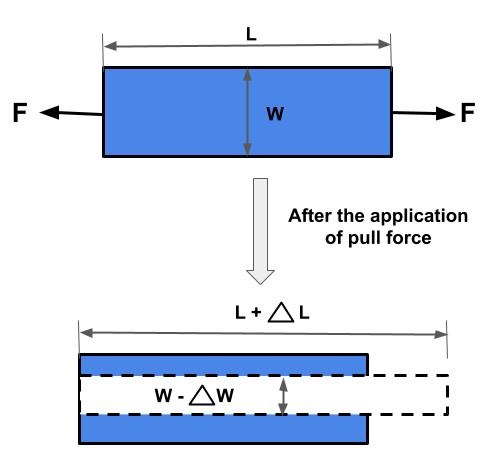
1.1) Lateral Strain Calculation Formula

Mathematically lateral strain is equal to the ratio of change in length to the original length in the direction perpendicular to the applied force.
1.2) Longitudinal Strain Calculation Formula

Mathematically Longitudinal strain is equal to the ratio of change in length to the original length in the direction of applied force.
2. Shear Strain
Shear Strain is produced in a material when two equal and opposite non-aligned forces act on a body.
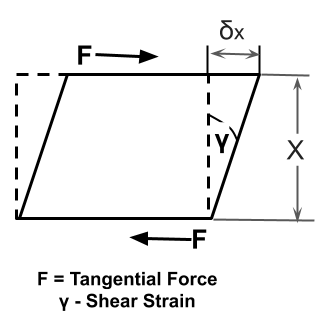
Mathematically shear strain is equal to the change in the tangential angle in the direction of applied shear force. Its unit of measurement is radians.
Shear Strain (γ) = Tan θ
3. Volumetric Strain
Volumetric strain is a type of mechanical strain produced inside a body when an external force from all directions of a body is applied.
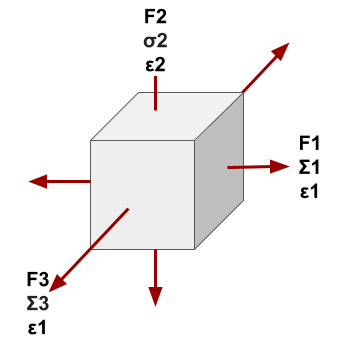
For example, in a gas tank, gas produces volumetric strain inside the tank. Mathematically volumetric strain is the ratio of change in volume to the initial volume.
True Strain vs Engineering Strain
When an external tensile force is applied to a metal rod, its diameter decreases with the increase in the external force and breaks ultimately. We can calculate this change in diameter at the neck using true and engineering strain.
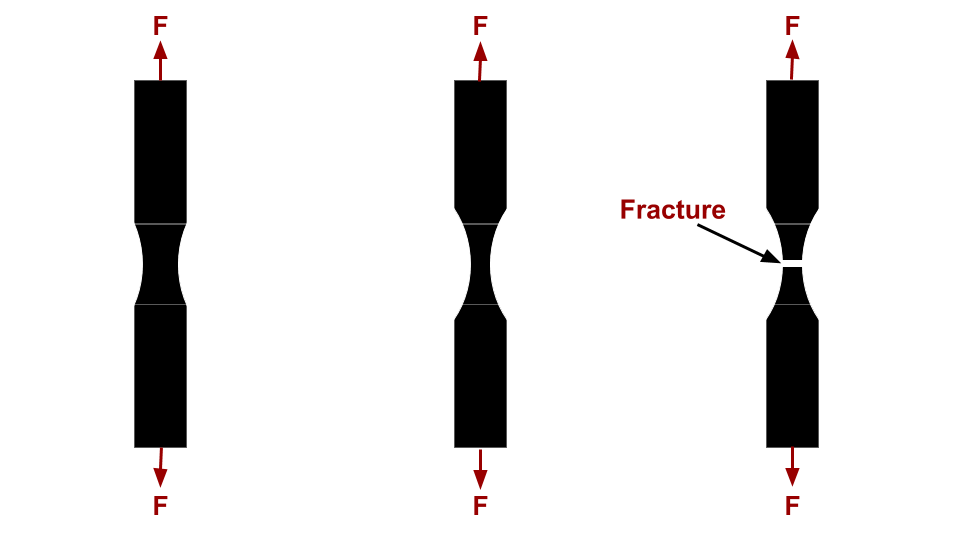
This change in length and diameter of the test specimen is not sudden. It is decreasing gradually with the application of external force.
Engineering and True Strain are different in the way how they measure this change in cross-section when an external force is applied.
True Strain

The True Strain measures the change in length to the original length at the various instants when an external force to the test specimen is applied.
In other words, We can calculate the True strain by measuring the change in length at various time stamps and sum over them.
Engineering Strain

Engineering Strain measures the total change in length to the original length when an external force to the test specimen is applied. It is a type of linear strain.
We calculate Engineering Strain or stress considering the initial and final length of the test specimen.
To sum up, mechanical strain in a body calculates deformation inside a body when an external force is applied. It has applications during product design for failure analysis. We suggest you also read this article on the Stress-Strain curve to understand the relationship between engineering stress and strain.
We will keep updating this article on strain in mechanics. You can share your suggestions and questions on strain in mechanical engineering in the comment box.

Add a Comment